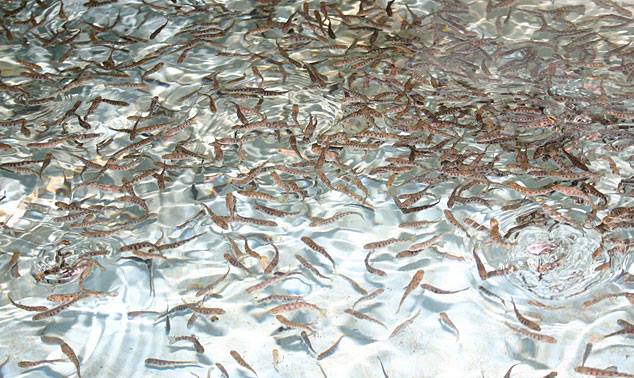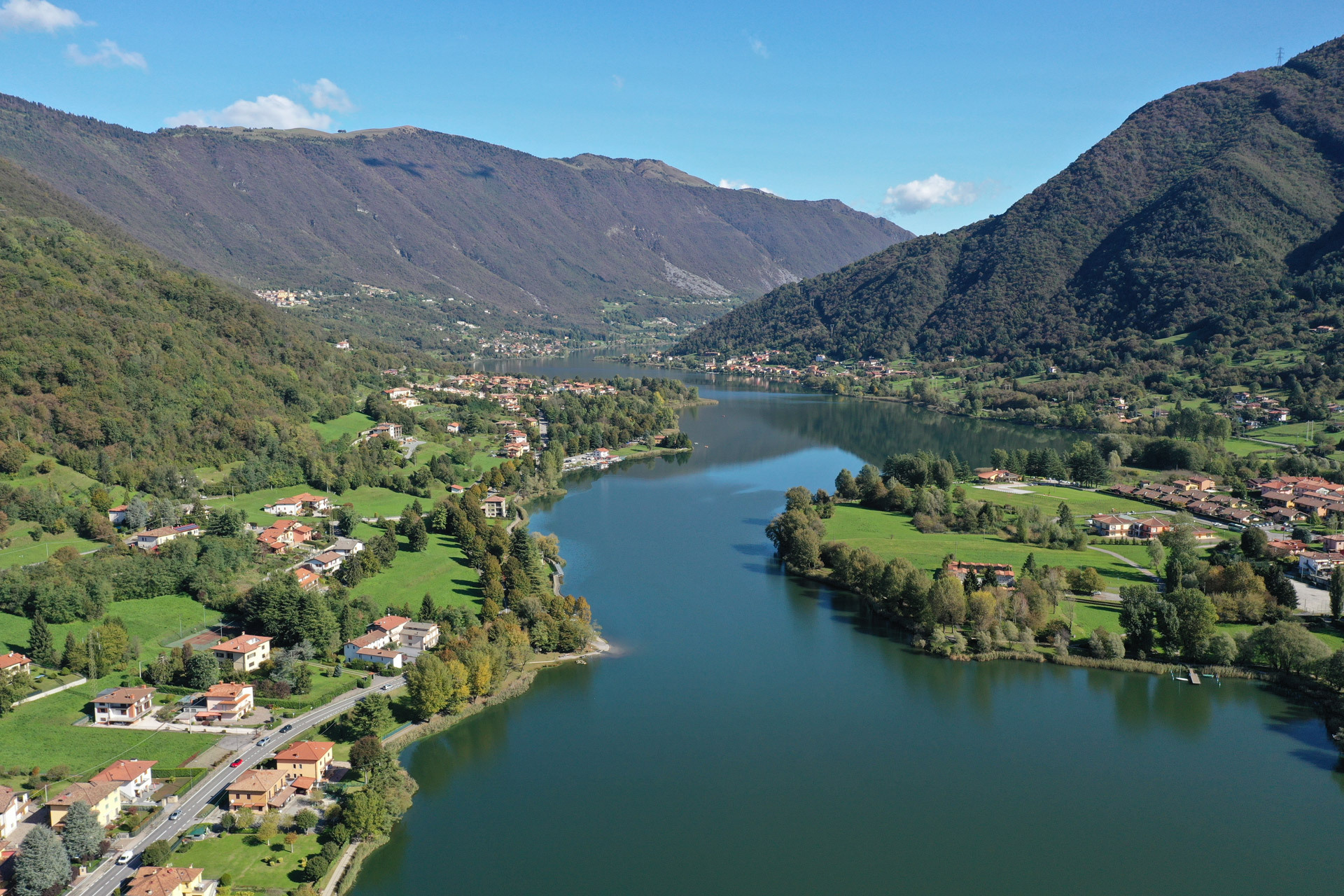Considering the themes of fish conservation on which it works, the Endine fish hatchery has significant educational importance, and it represents a prime location for visits, increasing the awareness of groups of schoolchildren for whom it can be considered as a valuable opportunity. All visiting students will be provided with educational material, while stocks last, and the visit and equipment are free of charge.
Contacts:
Associazione Sportiva Dilettantistica Pescatori di Bergamo (Bergamo Fishermen’s Amateur Sports Association)affiliated with FIPSAS (Italian Federation of Sport Fishing and Underwater Activities)
E-mail – bergamo@fipsas.it
Telephone – 035 232586
INTRODUCTION
Fish hatcheries make it possible to artificially breed wild fish, whose genetic make-up comprises the best possible characteristics selected specifically for the respective environment; this is therefore the only way of producing juvenile fish for restocking species that are not available in common commercial networks.
Another important role of fish hatcheries in restocking operations is the possibility of deciding the best time to release the fish. The availability of a hatchery in which fish hatch and can be kept to grow for a certain period of time enables the most appropriate time for spawning to be chosen, in accordance with various aspects: weather conditions, water flow rates, and staff availability. Repopulation can be carried out at different times, transporting small numbers of fish, minimising mortality and becoming a tool in helping water stewardship.
This kind of structure also represents an excellent ichthyology laboratory for scientific research, where it is possible to study fish about which little is known still today, but for which knowledge is essential in order to work effectively.
LOCATION
The Municipality of Endine Gaiano, just over a kilometre east of Lake Endine, has made a portion – totalling approximately 17,000 square metres – of its property available for the implementation of the project. This area is adjacent to the multifunctional sports centre and the Civil Defence training centre, and is crossed by a cycle-pedestrian path that further increases its suitability, preparing the ground for an optimal use of the fish hatchery.
The area is almost flat, with an artificial depression where the shallow water table has formed a small lake (with an area of about 4,000 square metres), with a maximum depth of about 3-4 metres. This could become an important basin for breeding and rearing broodstock.
FISH SPECIES PRESENT
For Lake Endine, the most interesting species is undoubtedly the pike, a typical lake predator, whose original stock, probably southern pike (Esox cisalpinus) with a livery featuring light bands or stripes on a dark background, has over the years been hybridised by specimens of northern pike (Esox lucius), greenish in colour with yellowish round spots. Other species that can be farmed in the facility, albeit on an experimental basis, are those of small Cyprinids, such as Leucos aula and Alburnus arborella, or Telestes muticellus and Phoxinus phoxinus (common minnow), which, as “foraging species”, are at the base of the freshwater food chain, and are not available within common commercial networks. These could then be potentially accompanied by all lake fish species (including but not limited to tench, chub or perch) that could be activated in relation to individual planning requirements and according to the structure’s future directions, intrinsically offering notable opportunities for development.
ACTIVITIES
The fish hatchery performs the following phases: capture and conditioning, if required, of spawners close to full sexual maturity; artificial reproduction; egg incubation; larvae hatching and yolk sac reabsorption; nursery culture to rear juveniles; spawning and reintroduction into the natural environment.
WATER SUPPLY
Water represents the indispensable element for the operation of a hatchery, both in terms of quantitative availability and chemical-physical quality. In order to guarantee a water flow rate sufficient for the plant’s operation, a well and a complex supply and monitoring system will have to be built. In fact, a continuous supply of water must always be guaranteed for the plant; a lack of water, even for just a few minutes, can lead to the death of the eggs, invalidating the work of an entire season.
The facility’s plumbing and electrical system are at the heart of the system and determine its functional success. These elements clearly represent the greatest expense, for which highest-quality components must be sourced.
PLANT DESCRIPTION
The structures forming the core of the hatchery are laid on a reinforced concrete slab. The buildings themselves are made of wood, using lightweight solutions that blend well with the landscape, performing the function of roofing and enclosure without significantly affecting construction costs and providing opportunities for future reuse. The installation consists of two adjoining square-plan rooms with a total floor space of approximately 50 square metres (two rooms of 25 square metres each).


